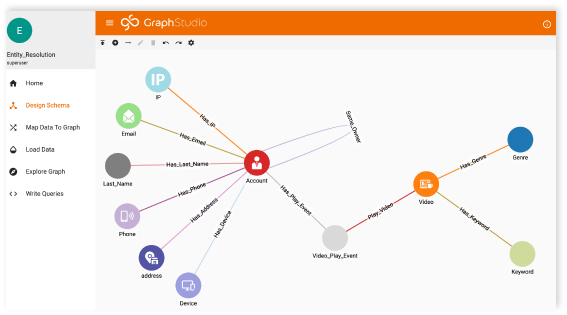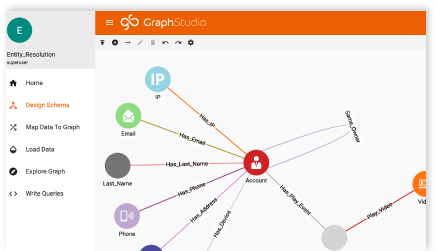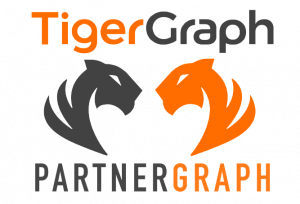Delivering Real-Time Graph Analytics at Scale
- Blog >
- Delivering Real-Time Graph Analytics at Scale
Technology often seems far removed from sports. Performance, however, is a significant common denominator. Delivering performance means winning the game for athletes and defeating the competition in business.
Enterprise organizations depend on analytics to gain insight across their entire operation. While incorporating graph technology gives them a definite edge, even a superior graph database such as TigerGraph is only part of the equation. Companies that strategically choose a top-performing technology stack reap greater rewards.
During their Graph + AI Summit presentation, Delivering Real-Time Graph Analytics at Scale, Vinay Singh, Sr. Director, Datacenter Compute Marketing, Business Development and ISV Ecosystems and Kumar Deepak, Distinguished Engineer and Fellow at AMD, each of whom spent 20+ years at Xilinx prior to AMD acquiring it, explored the technology stack that redefines the heights of enterprise analytics performance.
Graph Technology for Performant Analytics
Understanding the relationships within data is a vital component of analytics. This is undoubtedly true for customer experience in retail, patient recommendations in healthcare, optimizing supply chains in manufacturing, fraud detection for financial institutions, and many other business challenges.
All of these scenarios require tapping into an often enormous amount of siloed enterprise data and receiving results without significant lag time. Organizations won’t find the efficiency or the profitability they are looking for if they can’t detect fraud in real-time or course-correct routing logistics, as examples.
Building a Winning Technology Stack
When it comes to enterprise analytics, it’s not just the challenge of very large data sets. There’s an extreme complexity to these environments as well. The best athletes would be hard-pressed to win championships without the best equipment.
Likewise, to propel deep business insights, enterprise-grade analytics require a graph platform powered by underlying, high-performing technology. Many technology stacks fall short – they can’t scale like TigerGraph nor provide the processing performance of AMD, while FPGA devices add another layer of acceleration.
“What is super exciting for us is that the AMD CPU, GPU, and FPGA platform is purpose-built to deliver compute acceleration for the entire data analytics ML pipeline,” said Vinay during the presentation.
Let’s take a quick look at the elements in this platform.
Graph Database and Analytics Platform
Graph allows you to easily look for patterns in relationships across the breadth of your data. A graph database, and TigerGraph specifically, is really the only option when you want to preserve the relationships within and between your data sets, especially when you have multiple data sets totaling a terabyte of data or more, and you want to perform hop after hop after hop.
Processors
When you have such data-intensive applications, you need compute athleticism. Using x86-architecture, AMD EPYC processors are fast and responsive, delivering exceptional performance. These CPUs are the most powerful processors on the market. According to Vinay, “The AMD EPYC is the industry’s best compute engine, that is purpose-built to deliver high performance computing, from enterprise to cloud.”
Accelerators
Now, add an FPGA into the mix and this is where things get exciting. The AMD Xilinx Alveo accelerator cards optimize acceleration for workloads in graph analytics and machine learning.
One of the ways these FPGA devices provide massive acceleration is through function-level pipelining. If you have three functions, once your first set of data has passed through Function 1, you can bring a second set of data into Function 1 while the first data set is now being processed by Function 2, and so on.
From a technical standpoint, a technology stack that includes AMD EPYCTM and Xilinx Alveo™ (FPGA) cards has many other benefits. In a reference architecture with HPE, AMD showed a 66% reduction in RAM usage while improving time-to-nsight by 20x and accuracy by 30%.
What’s the Bottom Line for Businesses?
Enterprise organizations deploying TigerGraph with AMD processors and accelerators don’t have to worry about the scale of compute or the scale of data. “There’s [really] no limitation on how big a graph [can] be to use our solution. Any size of graph, any size of compute complexity we can handle with AMD EPYC CPUs and AMD Alveo cards,” said Kumar.
He then gave us a real-world business example of how this technology stack – TigerGraph running with AMD EPYC and Alveo increased the efficiency of a supply chain. “We ran on one customer data set that took five days to schedule all the travel plans just on CPU only; when we combined CPUs with Alveo, it was like 15 minutes, so an amazing performance gain.”
If you want to learn more about how this technology stack can help you outperform your competitors, watch the full Graph + AI Summit session.









